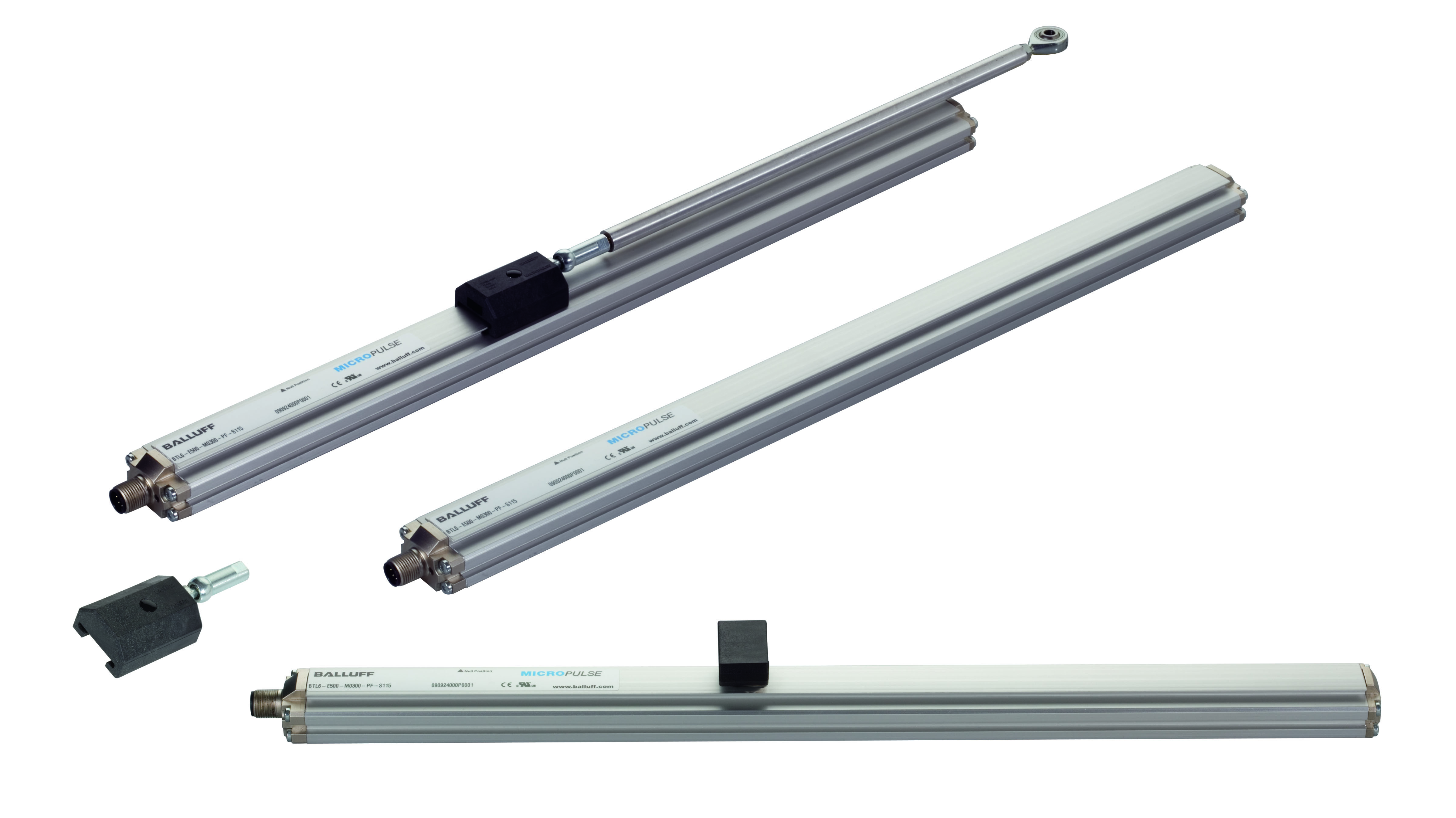External Linear Position Sensors: Floating or Captive Magnet?
 Linear position sensors that are designed to be mounted externally on a machine (as opposed to those designed to be installed into a hydraulic or pneumatic cylinder) are available in a variety of form factors that suit a variety of different applications and application requirements. One of the most common form factors, particularly for magnetostrictive linear position sensors, is a rectilinear aluminum extrusion that houses the sensing element, or waveguide, and the processing electronics. Commonly, you’ll hear these referred to as profile-style linear position sensors.
Linear position sensors that are designed to be mounted externally on a machine (as opposed to those designed to be installed into a hydraulic or pneumatic cylinder) are available in a variety of form factors that suit a variety of different applications and application requirements. One of the most common form factors, particularly for magnetostrictive linear position sensors, is a rectilinear aluminum extrusion that houses the sensing element, or waveguide, and the processing electronics. Commonly, you’ll hear these referred to as profile-style linear position sensors.

With these types of sensors, the moving part of the machine to be measured or monitored is attached to a position magnet. The position magnet can be either captive or floating (see image to the right). Each of these magnet configurations offer some inherent advantages. We’re going to take a closer look at each.
Captive Magnet
A captive magnet glides along in a track that is an integral part of the extruded aluminum sensor housing. The magnet is attached to the moving part of the machine via a mechanical linkage. Advantages of a captive magnet arrangement include:
- Mechanical flexibility: The magnet usually incorporates an articulating swivel or ball joint that is attached via a linking rod to the moving machine part. That means the sensor doesn’t need to be perfectly in line with the axis of movement.
- Protection from damage – In some cases, it is necessary to move the sensor out of harm’s way (e.g., extreme heat, caustic chemicals, strong electromagnetic fields, etc.). The linkage can be as long as necessary in order to connect to the sensor, which will be located in a more hospitable environment.
Some things to consider when choosing to use a captive magnet configuration:
- Binding of the magnet: A high-quality magnetostrictive sensor is going have a near-zero drag coefficient between magnet and extrusion. The magnet should not bind or drag. But in some applications, dirt, grease and particulates can accumulate and cause issues. For these applications, a floating magnet may be a better choice.
- Mechanical overtravel: In a captive magnet arrangement, if the machine travel exceeds the physical length of the sensor, the magnet will (of course) fall off the track. If this is a concern, consider a floating magnet instead.
Floating Magnet
In a floating magnet arrangement, the sensor is located adjacent to the moving machine part. The magnet is attached to that machine part, usually on a rigid arm or bracket. Advantages of a floating magnet include:
- No mechanical contact: The magnet never makes contact with the housing. This could be important in applications where dirt, grease or particulates tend to collect on the sensor (see photo below)

- Machine overtravel: Since the magnet is completely uncoupled from the sensor, machine overtravel isn’t a problem. Obviously, if the magnet leaves the sensor, position feedback is lost, but the sensor will resume normal operation once the magnet re-enters the sensor’s range.
Some things to consider when choosing a floating magnet configuration:
Magnet-to-sensor gap: In some cases the movement of the machine does not allow a consistent magnet-to-sensor gap to be maintained. In some sensors, this can lead to inconsistent or erratic sensor operation. Fortunately, there are sensors available with innovative technology that automatically compensates for such gap fluctuations and maintain full performance and specifications even as the gap varies. Click below to see such technology in action.
Ultimately, the choice between a floating magnet and a captive magnet arrangement is going to be driven by the requirements of your particular application.
Click the link for more information on external-mount linear position sensors.


One Reply to “External Linear Position Sensors: Floating or Captive Magnet?”